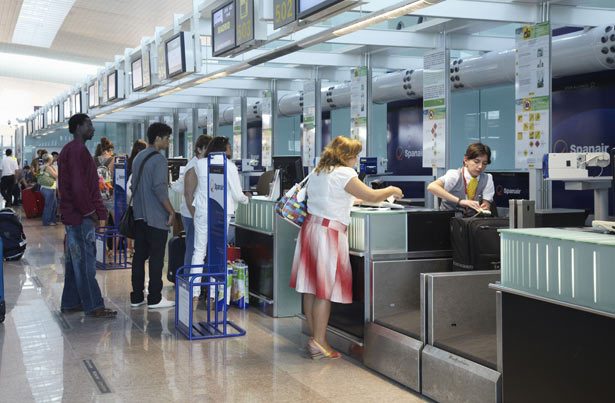Aviation
10 Things You Should Never Pack in Your Checked Bag

The Transportation Security Administration (TSA) maintains a complex system of rules for transporting both carry-on items and checked bags on flights. Some objects are prohibited on planes at all times, while others may be checked and not carried, or vice versa. Confused? “When in doubt, leave it out,” says the TSA.
If only it were that simple. Packing the wrong thing in your checked bag has the potential to ruin your trip—especially if that bag gets lost, broken, or roughed up by baggage handlers. A simple rule of thumb: Pack anything of value or importance in your carry-on bag, in case your luggage gets lost by the airline. But there’s more to keep in mind. Below, in no particular order, are 10 things that you should always leave out of your checked bag.
Jewelry and Valuables
Of course, it’s not probable that your checked bag will be lost by an airline. According to a report by SITA, a company that gathers statistics for airlines, .012 percent of passengers’ bags were reported damaged, lost, or delayed in 2010. But if you happen to fall in that .012 percent and your checked bag contains an antique watch, a family photo album, or your wedding ring, you’re in trouble.
Most carriers require passengers to submit claims forms when bags are lost. Your airline will then tally the depreciated value of the contents of your missing suitcase—if your claim is accepted, that is. Airlines will pay no more than $3,300 per passenger for bags lost on domestic flights. All in all, it’s unlikely that you’ll receive compensation equal to the full value of your lost possessions.
We recommend leaving jewelry and other valuables at home when traveling, but if you must bring these items on the road, be sure to store them safely in your carry-on bag.
Identification, Passports, Boarding Passes, and Essential Documents
All necessary documents, whether they’re work or insurance papers or other sensitive information, should be kept with you in your carry-on bag. But there is another solution—back it up. If you plan to put papers of importance in checked luggage, keep copies (either hard photocopies or copies on a flash drive) on your person.
Bottom line: Any important documents you’ve packed in your checked luggage should be photocopies, not originals. And any documents that include sensitive or private information should be kept out of your checked luggage altogether.
Cash and Credit Cards
All checked bags are screened electronically, but select checked bags are opened by TSA agents and screened by hand. When packing a checked bag, be aware that a security agent—a stranger, essentially—may be rummaging through your things at some point. There have been reports of TSA workers stealing electronics, money, and other valuables from passengers’ bags; as expected, such occurrences are rare. But as a precaution, your cash, checkbook, and credit cards should be kept with you in your carry-on bag.
There’s always a chance that your suitcase could get damaged en route, too. If a busted zipper befalls your bag, any packed cash will be easy pickins for thieves.
Laptop and Electronics
Take it from the TSA. A representative from the agency offered this advice for flyers: “Electronics … should be packed in carry-on luggage because they are typically fragile, expensive, and more prone to breaking if transported in checked baggage.” The threat to your electronics is two-fold: you need to protect your devices from burglary (see above) as well as breakage. No matter how many beach towels you’ve wrapped around your laptop, it’s still at the mercy of baggage handlers and bumpy flights while in transit.
Lighters, Matches, and Flammable Items
The TSA has a handy checklist of prohibited items on its website. Some of the objects on the list are as obscure as they are obvious: gun powder, hand grenades, tear gas, vehicle airbags (packed to protect a checked laptop, perhaps?). But items of note include lighters, matches, and flammable objects, which anyone going on a camping trip (or travelers who smoke) might need to pack.
Lighters without fuel may be packed in checked luggage. However, lighters with fuel may only be packed in checked luggage if they’re in a Department of Transportation-approved case; an example of this is the Zippo Air Case. Matches are prohibited in checked baggage, and flammable items, such as paint or liquid fuel, should be avoided as well.
All of Your Clothes
If your luggage disappears into the mysterious black hole of missing checked bags, you’ll thank your former self for putting a clean pair of underwear and some socks aside in your carry-on bag. An entire outfit—enough to get you through a day or two at your destination in case your airline loses your suitcase—is even better. Other daily essentials, like a toothbrush, a comb, key toiletries (though liquids must be in containers no larger than 3.4 ounces), and whatever else you might need if your bag gets lost should be placed in your carry-on as well.
Medications
There’s a theme here. If you can’t live comfortably without it, don’t pack it in your checked bag. That old cliche, “better safe than sorry,” should be lingering in the back of your mind when you’re organizing your luggage. Accordingly, prescription drugs are best kept on your person.
Passengers are permitted to bring liquid medications onto planes, even if they exceed the 3.4-ounce limit for carry-on liquids. But you’ll need to officially declare your oversized liquid medications when going through the checkpoint. Tell a security officer stationed at the checkpoint that you’re carrying liquid medications, and hand them over for inspection. It helps to have a doctor’s note or a medical ID card, but it’s not required. The TSA also suggests that travelers label medications to facilitate the screening process.
Breakable Items
Don’t blame it all on the baggage handlers. Sure, they’ve been known to bust up a prized possession or two. But baggage handlers, under pressure to load hundreds of bags onto a plane in a short amount of time, are just trying to get your flight off the runway—with your luggage onboard. Sometimes this necessitates a good throwing arm. (Read more in Confessions of an Airline Baggage Thrower.)
Fragile items should always be packed in your carry-on bag. If you must bring home that bottle of red you picked up in Bourdeaux, use a product like the VinniBag, which will protect the contents of your bag in case the bottle breaks.
Film
If you ducked the digital trend and snap travel photos on a camera that takes film, steer clear of storing undeveloped rolls in your checked bag. The X-ray machines that the TSA uses to screen checked bags can damage film. Instead, put your film in your carry-on bag and ask the TSA agent at the security checkpoint to inspect your film by hand. The TSA suggests that travelers pack film in clear canisters or clear plastic bags to expedite the inspection process, but this isn’t required.
Food and Drink
According to the TSA, flyers should avoid putting food and beverages in checked bags. Passengers aren’t prohibited from storing chow in checked bags, but it’s a wise suggestion nevertheless. Bottled drinks are likely to explode or crack in transit, thus ruining the cashmere sweater tucked in your bag. And if your flight is delayed or your luggage gets lost for a while, your packed food might spoil.
Courtesy : Airfarewatchdog

Airlines
Air India to Launch aircraft maintenance training institute in Bengaluru

Air India, one of India’s leading global airlines, is set to establish a Basic Maintenance Training Organization (BMTO) in Bengaluru.
This institute will offer a comprehensive Aircraft Maintenance Engineering (AME) program certified by the Directorate General of Civil Aviation (DGCA). The program will follow an integrated 2+2 year structure, combining classroom learning with practical, hands-on training.
This initiative is part of Air India’s broader goal of creating a robust aviation ecosystem in India. With plans to expand its fleet and strengthen its operations, the airline aims to build a skilled workforce of maintenance engineers, making the organization self-reliant while supporting its ambitious transformation journey.
This country tops visa rejections in the popular Schengen countries
To bring this vision to life, air india has partnered with Bengaluru Airport City Limited (BACL), a subsidiary of Bangalore International Airport Limited (BIAL). Together, they will develop a state-of-the-art facility spanning 86,000 square feet at Bengaluru Airport City.
This purpose-built campus will feature modern classrooms, well-equipped laboratories, and qualified trainers to deliver world-class education and training. The institute is expected to become operational by mid-2026.
The BMTO will be located close to Air India’s new 12-bay Maintenance, Repair, and Overhaul (MRO) facility, also set to open in Bengaluru by early 2026. The AME program will begin with two years of academic coursework, followed by two years of practical training at the MRO, ensuring students receive hands-on experience adhering to industry standards.
Sanctions & Engine Issues Ground Half of Russia’s A320neo fleet
In the meantime, Air India has introduced a Cadet AME program in collaboration with reputable institutions in Bengaluru and Hyderabad.
This ensures continuity in its commitment to developing skilled aircraft maintenance engineers while the BMTO facility is under construction. The program also allows students to pursue a bachelor’s degree through university partnerships, enhancing their career and academic opportunities.
With this initiative, air india plane aims to address the growing demand for skilled professionals in aircraft maintenance and engineering, air india new planes contributing to the development of India’s aviation sector and creating specialized career paths for aspiring engineers.
-

 Aviation2 months ago
Aviation2 months agoMicrosoft Flight Simulator Raises $3 Million to Bring Back the An-225 Mriya
-

 Airlines2 months ago
Airlines2 months agoQatar Citizens Can Travel to the United States Without a Visa
-

 Aviation2 months ago
Aviation2 months agoQatar Airways bans these new Electronic Devices on plane
-

 Airlines2 months ago
Airlines2 months agoJapan Airlines Rolls Out Free Domestic Flights to International Passengers
-

 Defence2 months ago
Defence2 months agoWhich Country Has the Largest Fleet of Fighter Aircraft?
-

 Airport2 months ago
Airport2 months agoWestern Sydney Airport Welcomes Its First Plane After 6 Years of construction
-

 Travel2 months ago
Travel2 months agoQatar Airways Launches Four Additional Flights from Amsterdam
-

 Aviation2 months ago
Aviation2 months agoDid you know ? Once Boeing 747 carried 1088 passenger in 1991








